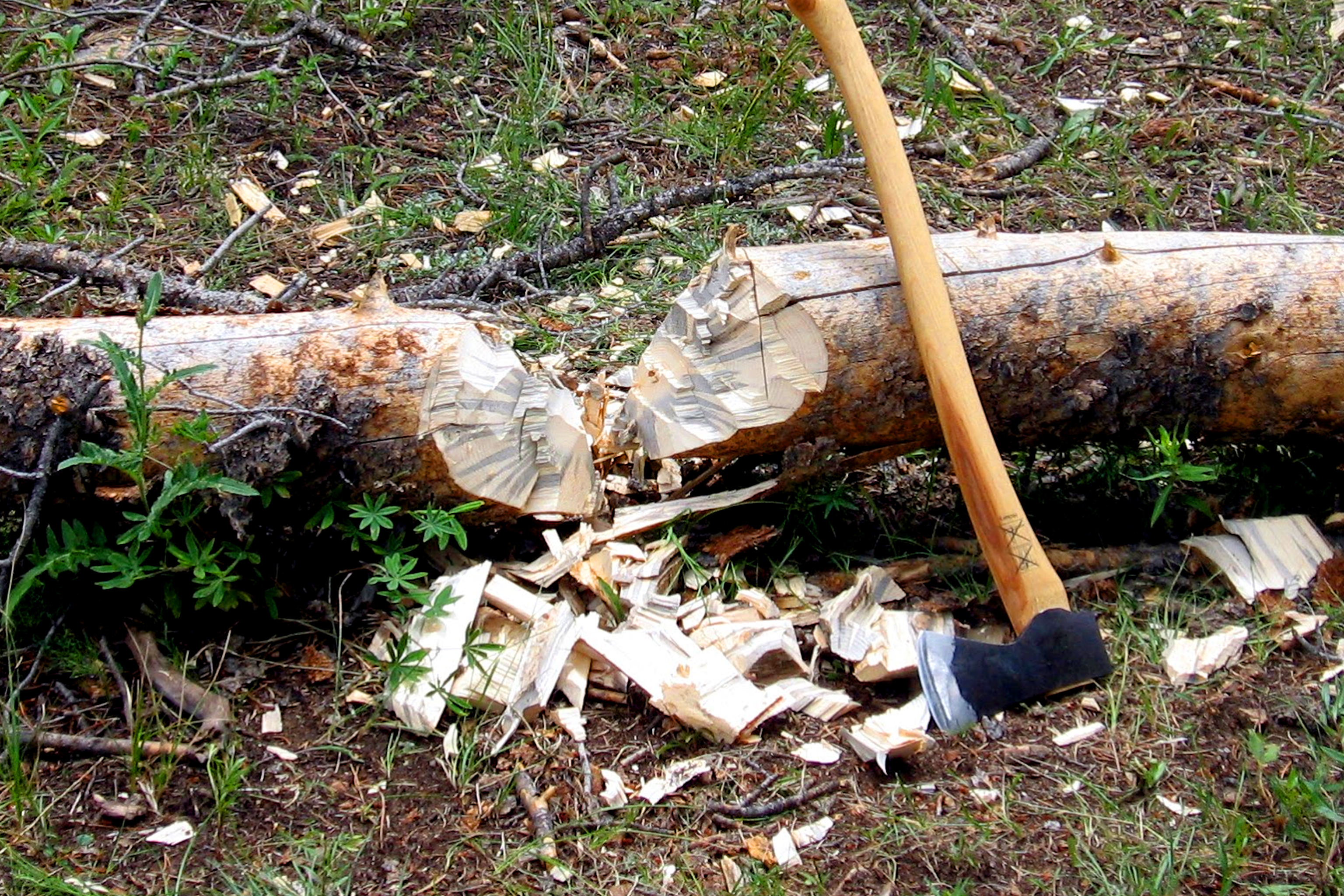Fell a tree
Build a safe model tree from cardboard and a wooden dowel, then simulate felling with a hinge and weights to learn forces and safety.



Step-by-step guide to simulate felling a model tree
How to Fell a Tree Safely with a Chainsaw - Step-by-Step!
Step 1
Ask an adult to supervise you and clear a flat workspace so you have room to build and test safely.
Step 2
Use the ruler and pencil to draw a 20 cm by 20 cm square on the cardboard for the base.
Step 3
Carefully cut out the square cardboard base using scissors or a craft knife with adult help.
Step 4
Mark a small circle in the center of the base that is a little smaller than the dowel diameter.
Step 5
Make the hole you marked in the center of the base using scissors or a craft knife with adult help.
Step 6
Push the wooden dowel up through the hole so it stands upright and fits snugly in the base.
Step 7
Tape a long strip of duct tape along one side of the dowel base to create a hinge so the dowel can tilt away from the taped side.
Step 8
Cut cardboard pieces for branches and a leafy canopy using scissors or a craft knife with adult help.
Step 9
Attach the branch and canopy pieces to the top of the dowel using tape so they stay in place.
Step 10
Tape small weights to one side of the canopy to make the tree favor tipping toward that side.
Step 11
Gently push the canopy and watch how the tree pivots on the tape hinge to see how it falls while an adult watches.
Step 12
Move the weights closer to or farther from the trunk or add more weight to see how the falling changes and test again.
Step 13
Place a folded towel under the fall path to protect your table and try a few safe trials with adult supervision.
Step 14
Take a photo or write what you learned and share your finished model and your safety notes on DIY.org
Final steps
You're almost there! Complete all the steps, bring your creation to life, post it, and conquer the challenge!


Help!?
I can't find a wooden dowel or duct tape—what can I use instead?
Use a sturdy pencil, chopstick, or straight stick instead of the wooden dowel and replace the duct tape hinge with strong masking tape or cloth tape folded into a strip along the side of the cardboard base so the stick still fits snugly through the center hole and can tilt.
The dowel keeps wobbling or the tree won't fall—how do I fix it?
If the dowel wobbles or the hinge is too stiff, wrap tape around the dowel base or add small cardboard shims so it fits snugly in the marked center hole and adjust or loosen the long strip of tape hinge so the dowel can pivot when you gently push the canopy.
How can I adapt this activity for younger children or older kids?
For younger kids have an adult pre-cut the 20 cm by 20 cm base and make the center hole while they stick on branches and weights, and for older kids have them precisely measure weight positions, record fall angles, and test different hinge placements and weight amounts.
How can I extend or personalize the tree-falling experiment?
Decorate the canopy, attach different small weights like coins or washers, draw a protractor and ruler scale on the base to measure fall angles and weight distance, and keep a photo or data table comparing how moving weights changes the pivot and falling behavior.
Watch videos on how to simulate felling a model tree
One Easy Method to Fell a Tree Safely
Facts about forces, levers, and safety for kids
⚖️ The center of mass decides which way an object will tip — moving small weights on your model shows this clearly.
🔩 A hinge provides a pivot point: changing hinge position or stiffness changes how much force is needed to start the fall.
📦 Cardboard is made from layers of paperboard and its corrugated structure gives it surprising strength for lightweight models.
🌲 In real logging, a large tree can weigh several tons — that's why cutting direction and safety planning are critical.
🪓 Professional loggers use a notch plus a back cut to control fall direction — your model's hinge and weights mimic that idea.
How do you build and simulate felling with a model tree?
What materials do I need to make a safe model tree and felling rig?
What ages is this model tree felling activity suitable for?
What safety tips should we follow when simulating tree felling with a model?


One subscription, many ways to play and learn.
Only $6.99 after trial. No credit card required


